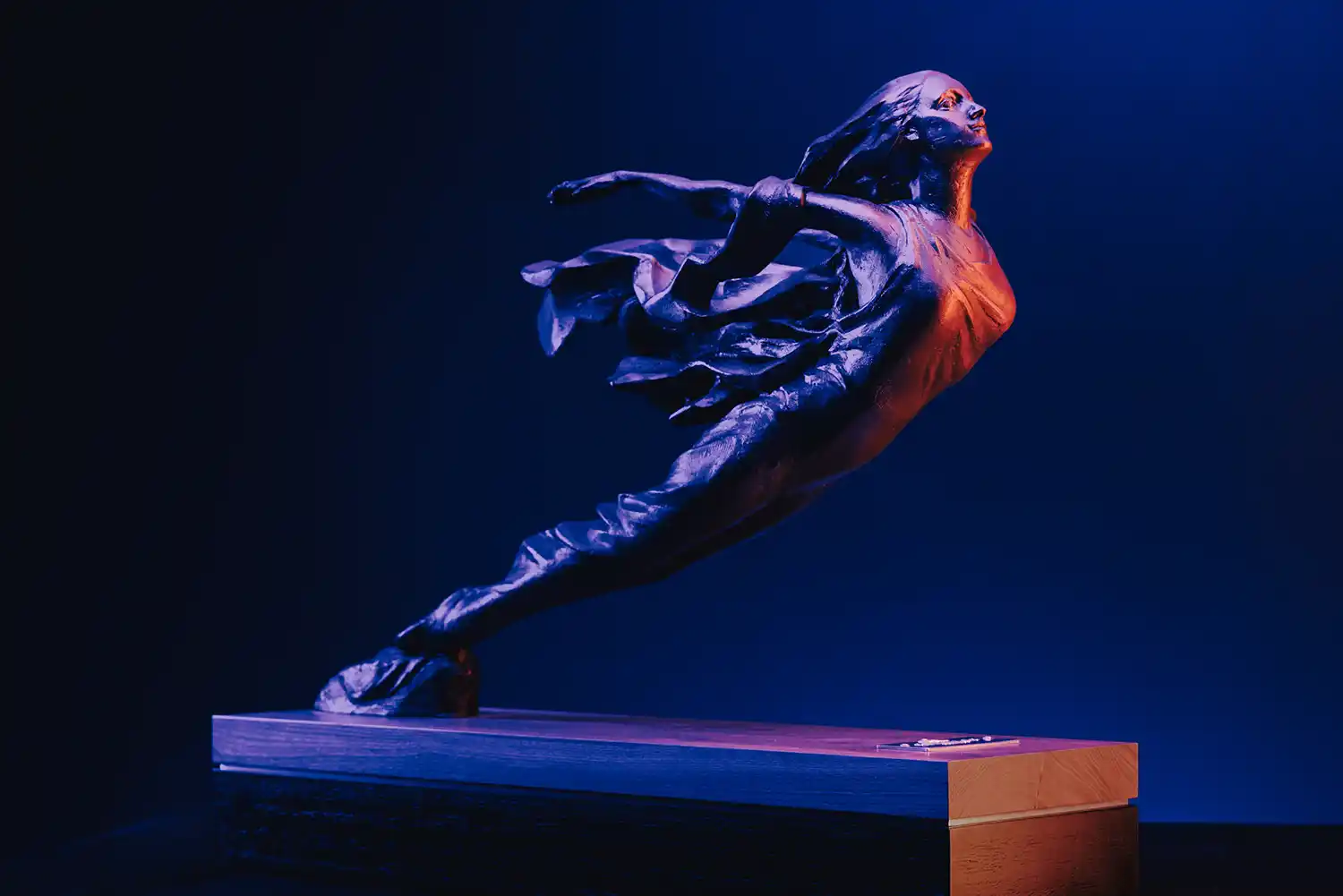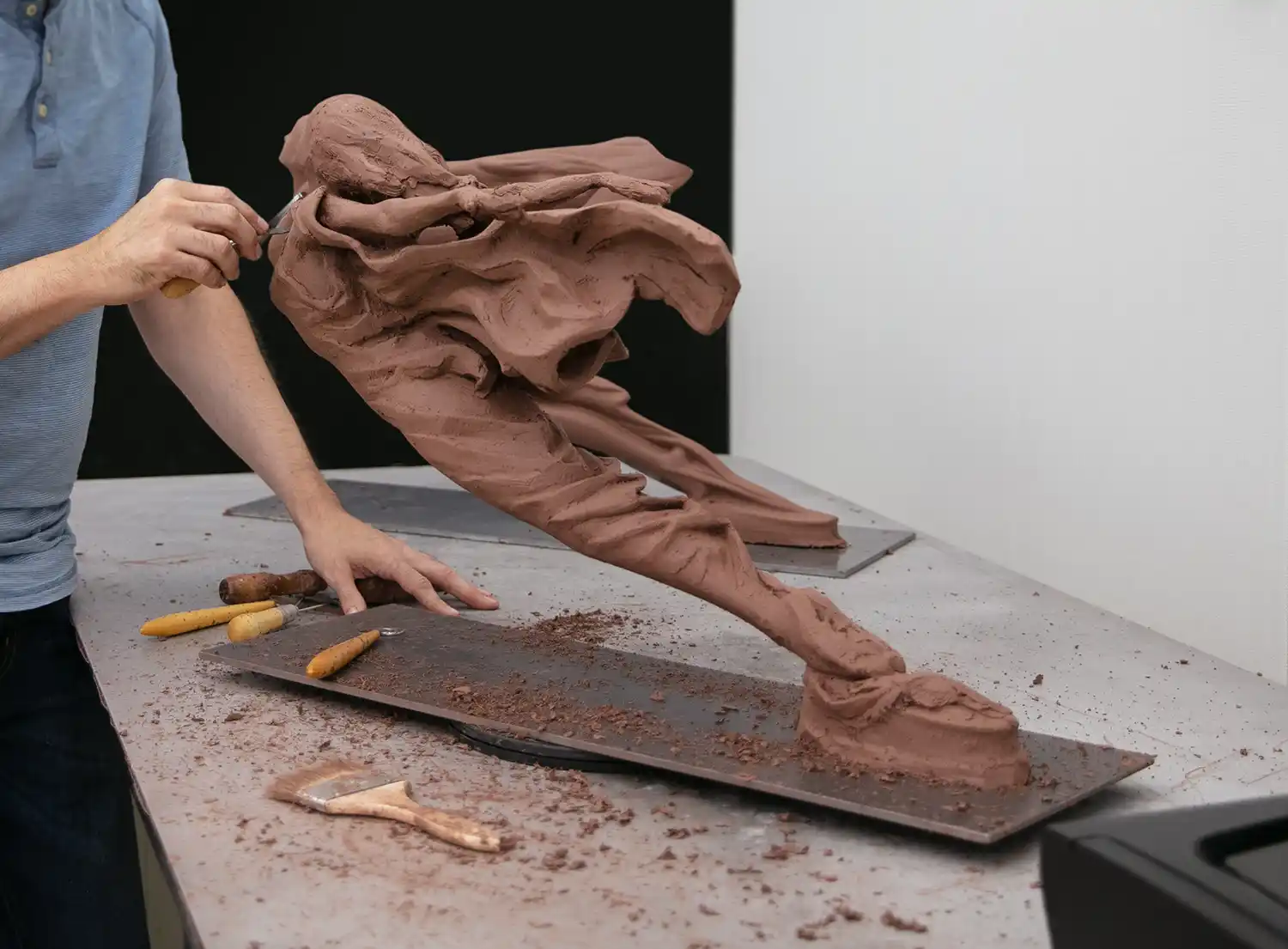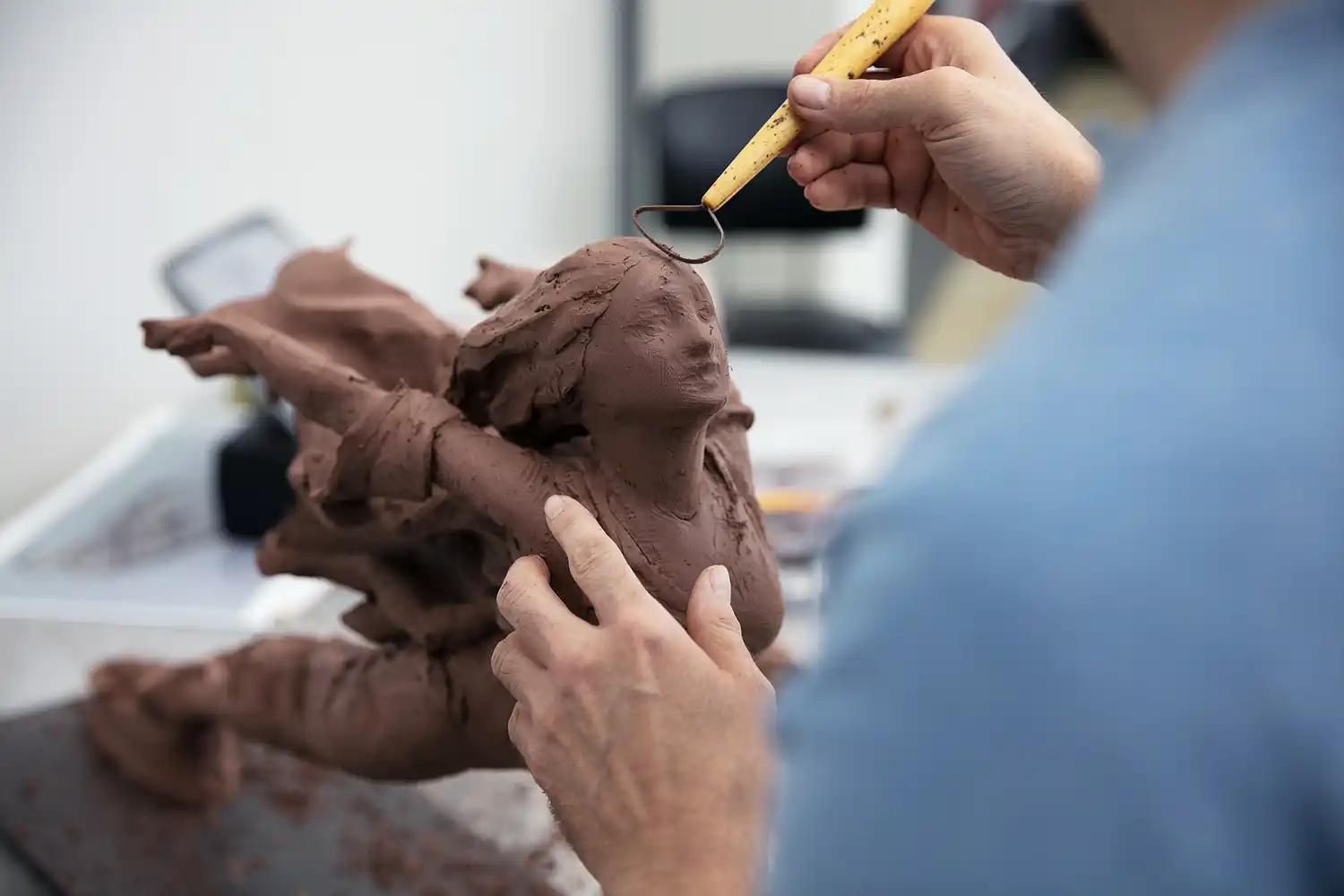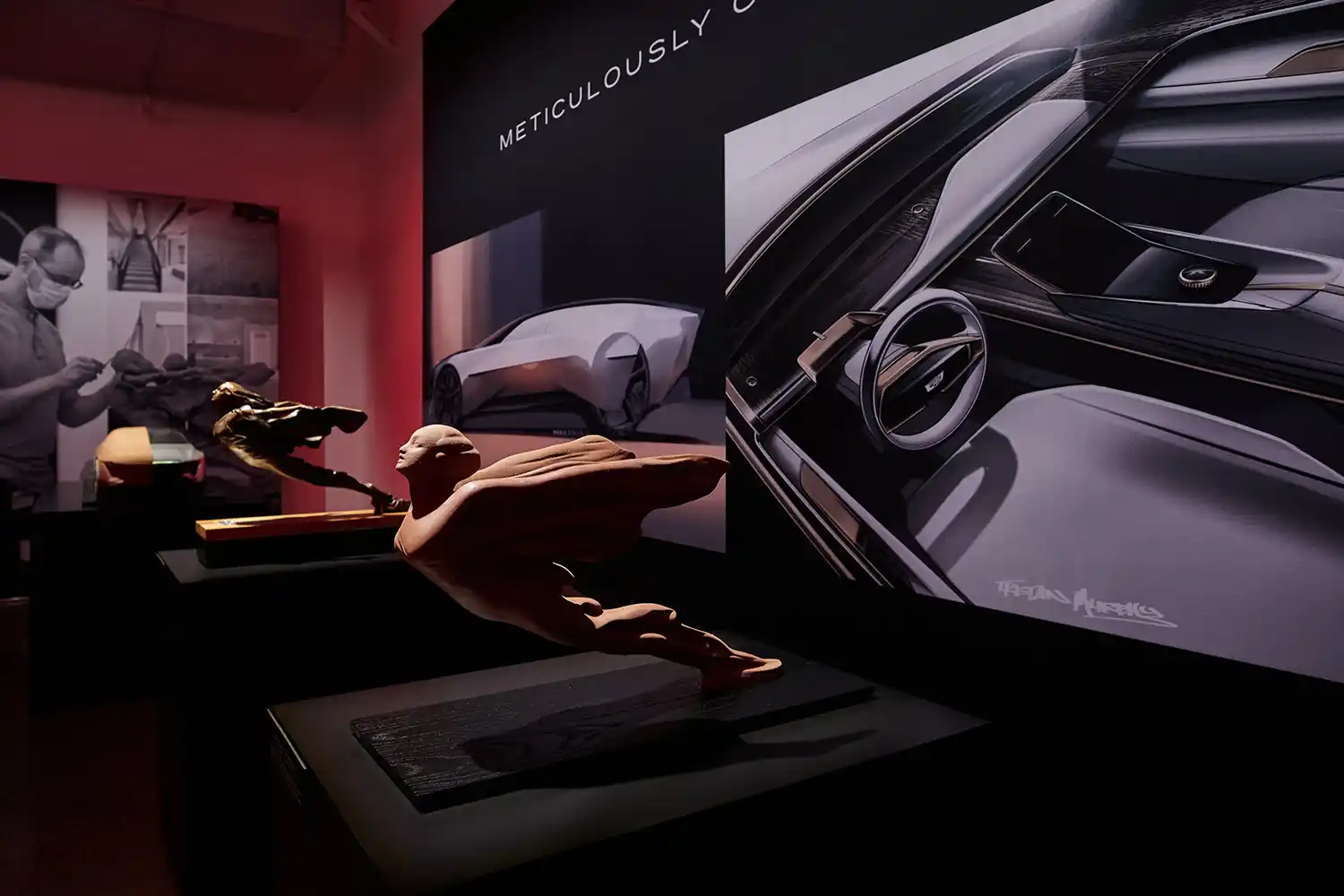
The “Goddess” has returned on CELESTIQ, paying homage to Cadillac’s illustrious design history and symbolizing the personalized, handcrafted artistry built into each and every bespoke vehicle.
“Reimagining the “Goddess” was a beautiful experience because it required me to study the past and understand the evolution of what Cadillac is today,” said Cadillac Creative Sculptor Richard Wiquist, who came to the GM Design studios with a background in figurative art. “This rendition introduces a new, soaring form that reflects the brand’s heritage while also driving it into the future.”
The “Goddess” was introduced in 1930, at the height of popularity for automotive mascots. In an era that lasted more than 25 years, several iterations were created, as the impressionistic form evolved with the brand’s design language and shifting cultural aspirations.
Early examples reflected more classical influences, while later versions such as those of the 1950s took on a more abstract aesthetic that reflected popular Jet Age design trends.

“The “Goddess” always represented the aesthetical zeitgeist,” said Wiquist, who found his inspiration in the 1933 “Goddess” that distinguished Cadillac’s legendary V-16 models of the era. “The 1933 figure had a great sense of motion conveyed through drapery that appeared to flow from the figure.”
In addition to the production “Goddess” figures that served as inspiration, the GM Design Center’s library provided additional perspective for Wiquist, with art history references of drapery incorporated in sculpture over hundreds of years.
“Every detail in a sculpture holds meaning or is intended to evoke an emotional response,” said Wiquist. “For the new “Goddess”, it had to have context and imbue the personal connection the figure represents between Cadillac and its clients through vehicles such as CELESTIQ.”
With no constraints on his design, Wiquist spent months handcrafting the new form in clay, refining the delicate impressionistic style until its gesture captured the essence of motion with a soaring stance — and a lithe, ethereal quality conveyed with meticulous sculpting craftsmanship.

There wasn’t a mandate on how the new “Goddess” would be incorporated on CELESTIQ. The goal was simply to reinterpret the form for a new age, while other Cadillac artists would incorporate the imagery into the all-new CELESTIQ.
The “Goddess” found its way on a pre-production prototype parked in the hallway of the Cadillac design studio. They included front-fender plaques on the exterior and, on the interior, the multi-function controller on the center console.
The front fender trim features a three-dimensional “Goddess” in molded glass as part of a piece of milled billet aluminum that’s polished, brushed and tinted. The backlit, three-dimensional “Goddess” emblem is positioned centrally within the multi-function controller and also encased in glass. An aluminum dial around the jewel-like feature turns independently, so the “Goddess” always stays in the same position.
Additionally, CELESTIQ clients will see a two-dimensional “Goddess” emblem above the vehicle’s charge port door.
“After more than 120 years, heritage is an inextricable element of everything Cadillac does, while our future is about perfecting the art of individuality,” said Wiquist. “That comes from greater emotional connections conveyed in design and the process of co-creating imaginative showpieces. That’s exactly what the “Goddess” represents with CELESTIQ.”
CELESTIQ will be Cadillac’s second all-eletric vehicle to reach the Middle East, following the exquisite LYRIQ. Production will be very limited and CELESTIQ is available through inquiry only.

